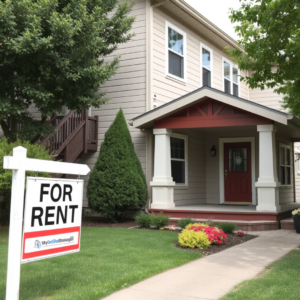A seismic shift is underway in the U.S. rental market. According to a recent article from MSN, rent prices in 13 states are projected to double in 2025, sparking concern among tenants, housing advocates, and property managers alike. For many Americans, housing is already the single largest expense — and with rates expected to surge even higher, affordability and housing stability could become even more difficult to achieve.
The 13 States to Watch Closely
The report outlines the following states as rental price hot zones in 2025:
-
Florida
-
Texas
-
California
-
New York
-
Nevada
-
Arizona
-
Colorado
-
Washington
-
Oregon
-
Massachusetts
-
New Jersey
-
Georgia
-
North Carolina
These states have seen strong population growth, rapid urban development, and high demand for rental units. But with limited housing supply and increasing interest rates, the pressure on rents continues to intensify.
Why Are Rent Prices Rising So Fast?
Several key factors are driving this spike:
-
Inflation & Cost of Living: General inflation has raised prices across the board — rent included.
-
Supply Shortages: Many cities still face a housing shortage, especially affordable units.
-
Migration Trends: States like Texas, Florida, and Arizona are attracting new residents, increasing demand.
-
Landlord Costs: Insurance, taxes, and maintenance fees have gone up — many landlords are passing these costs on to tenants.
-
Lack of Rent Control Policies: Without legislation to cap rent increases, landlords can raise prices as the market allows.
What This Means for Renters
This dramatic uptick in rental prices isn’t just a headline — it has real consequences:
-
Housing Insecurity: Tenants on fixed incomes or tight budgets may be priced out of their homes.
-
Forced Relocation: Many families could be pushed into moving — often to less desirable or more distant areas.
-
Increased Cost of Living: As rent takes up more of the monthly budget, other areas like healthcare, food, and savings may suffer.
-
Impact on Young Professionals and Students: Those just starting out may struggle to find affordable housing near work or school.
How to Prepare (or Protect Yourself)
Whether you’re a renter trying to survive the squeeze or a landlord looking to stay transparent with tenants, here are a few proactive steps you can take:
For Renters:
-
Start Budgeting Now: Begin adjusting your monthly spending to accommodate higher rent.
-
Negotiate Before Renewal: Ask about lease extensions, multi-year deals, or incentives to lock in current rates.
-
Research Relocation Areas: Look into cities with lower costs of living or expanding housing markets.
-
Check Local Resources: Some cities offer rental assistance programs or legal support for tenants.
For Property Managers and Landlords:
-
Communicate Early: Let tenants know about upcoming increases well in advance to maintain trust.
-
Offer Flexible Options: Monthly discounts, referral programs, or longer leases can help keep good tenants.
-
Stay Compliant: Be aware of new housing laws, rent control measures, and eviction moratoriums in your area.
-
Invest in Your Properties: Upgrading amenities or adding value can justify rent increases while keeping units attractive.
What Does This Mean Long-Term?
If these projections hold true, we could see widening inequality in housing access, particularly in urban centers. On the flip side, this may push developers, policymakers, and investors to address the housing crisis more aggressively by building affordable units and rethinking zoning regulations.
For renters and landlords alike, staying informed, proactive, and adaptable will be key to navigating 2025’s volatile rental landscape.
Bottom Line: The rent hikes coming to these 13 states could reshape where and how Americans live. Whether you’re renting, managing properties, or considering a move — now’s the time to plan and stay ahead of the curve.
Source: 13 States Where Rent Prices Are Expected to Double in 2025

